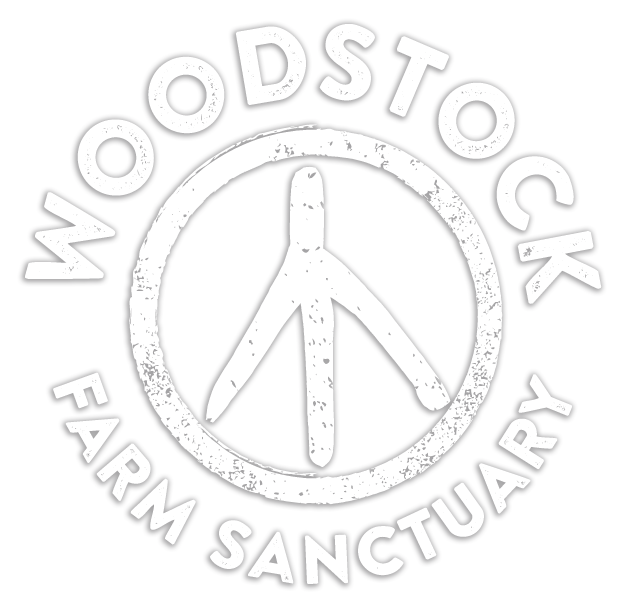How did sheep get here?
This weekend in the Hudson Valley, thousands of people will gather for the annual Sheep and Wool Festival to celebrate the world of animal-derived fibers. In addition to dozens of vendors selling yarn and fiber art, the Festival features live animals who are transported to the fairgrounds for shearing demonstrations and general display. The transportation and display process is stressful for sheep, who prefer to be in a familiar place with their herd.
There are many common misconceptions about sheep who are bred and used for their wool. The Sheep and Wool Festival perpetuates these misconceptions and paints a quaint, pastoral picture of a large and exploitative industry.
At minimum, we know this much is true: sheep who are used for their wool have been intensively bred over many generations. Their wool grows quickly and doesn’t shed naturally. Without shearing these sheep will overgrow their wool, which leads to matting and skin issues, and leaves them vulnerable to parasites. Humans have quite literally bred sheep to be reliant on humans for survival. People who advocate for the use of wool present this as a symbiotic relationship between humans and sheep: “they need to be shorn anyway, so what’s the harm in using the wool?” Suggesting altruism as a motive doesn’t exactly excuse the facts though. Farmers aren’t running charities for sheep who can’t shed, and they are not doing animals a service by alleviating them of discomfort that their industry caused them in the first place.
This logic also conveniently ignores what we know to be true of all “animal byproduct” industries: the wool industry is inextricable from the meat industry.
Simon and Garfunkel, rescued sheep at Woodstock Sanctuary.
Many wool farms sell some of their months-old lambs for meat, transparently selling both meat and wool as part of their business model. Other farms don’t advertise the realities of the industry, leaving the consumer to believe that their sheep are living out their natural lifespans on the farm. Unfortunately, this is rarely the case. As sheep age, their wool production and quality diminishes. They become a cost for the farm rather than a profit-maker. When it no longer makes financial sense to feed a sheep, most sheep are sent to slaughter for the farmer to recoup as much money as they can.
These few facts are just an introduction to the many issues inherent in the wool industry. Violent treatment of sheep, body mutilation without painkillers, and family separation are all a documented part of this industry—but visitors won’t see those realities at the Sheep and Wool Festival. This event celebrates and publicizes an industry that can only be profitable if people don’t fully grasp the harm that it does.
Woodstock Sanctuary is home to 40 rescued sheep, some of whom came from small farms where they were used for their wool, like Nora.
Nora shortly after arriving at Woodstock Sanctuary.
Want to dig into all of the harms of the wool industry? Collective Fashion Justice has great resources for learning about the wool industry’s impact on the environment, humans, and of course sheep themselves.


